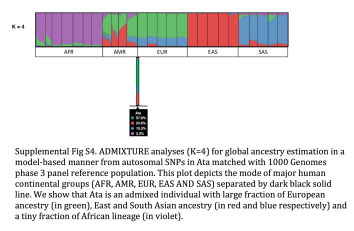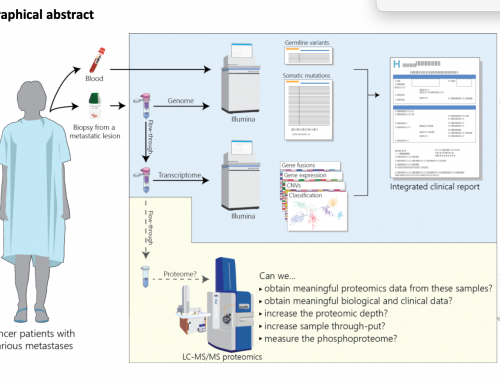For readers of this blog who don’t remember The X-files the reference may be lost on you, but the work published in Genome Research today will not. In Whole-genome sequencing of Atacama skeleton shows novel mutations linked with dysplasia Gary Nolan’s group at Stanford report on the sequencing and analysis of the Ata skeleton discovered in the Chilean desert in 2003. The skeleton was put forwards as evidence of alien life when it was discovered due to its size and obvious non-human skeleton – just 15cm long, cone-headed, but with some bone development that resembled those of a much older child. Spoiler alert: Sequencing confirmed this was not of alien origin!

The Genome was sequenced on Illumina’s HiSeq to 11.5x coverage. They report the same 3-4 million SNVs to the reference genome (so Ata is about as similar to the reference genome as James Watson), 500,ooo InDels and over 1000 SVs. They found mutations in multiple genes linked to bone development and growth. Whilst a large number of variants were reported as being linked to the skeleton malformity the team did not run them though tools like ExAC to check pathogenicity of sequence variants.
Although the skeleton was found in Chile Chilean origin DNA genealogical analysis shows traces of European and Asian ancestry so her family may have migrated to Chile sometime after the first Europeans got there.

The DNA was extracted from ground bone powder using the Roche High Pure Viral Nucleic Acid Kit, followed by a Beckman SPRIworks library prep (we tested this many years ago and I did not know they were still being used). Sequencing generated 377 million reads – just a single lane on HiSeq 4000!








Leave A Comment